A Play in the Life of a Theatre Captioner
A captioner in the theatre?
If you‘re one of the 10 million deaf, deafened or hard of hearing people in the UK who uses television subtitles, you may already know there’s now something similar in theatres. It’s called ‘captioning’ and it means you can enjoy a wide range of plays, musicals, comedies and family shows along with your hearing friends and family.
STAGETEXT, the charity which introduced theatre captioning to the UK back in 2000, was established by three deaf people who were passionate about theatre but couldn’t follow it through sign language or sound enhancement and who wanted to access plays and musicals via English text. Last year STAGETEXT captioned over 264 shows in more than 80 venues; in addition, over 50 theatres now have access to their own captioning equipment and captioners and provide the service in-house; this brings the total number of captioned shows to well over 650 a year.
So how does captioning work and what does a captioner do?
It takes skill, experience, training and a great deal of hard work to prepare for a captioned performance and, to settle any misconceptions, there isn’t someone madly typing away during the show! What few people realise is that a trained captioner will have already prepared the captions in advance, checked the production several times at the theatre, marking their ‘formatted’ script for any inaccuracies that need to be followed up, then rehearsed at home with a DVD recording of the show. Captioners follow the captioning conventions taught on their training course, and the preparation involves many hours of work – often between 60 to 80 hours – working with an electronic version of the script. Excellent attention to detail is required.
We start by removing any stage directions, correcting spelling and punctuation errors (there are usually lots of those), then we add sound effects and descriptions of music, including the words of songs that have been specially written for the production or which are played during the show. Character names are also included to help the audience follow the action around the stage.
The captions include the full text of the production. What we’re aiming to do is give deaf, deafened and hard of hearing people as near as possible the same experience as the hearing audience, so we try to mirror the actors’ performance, indicating any pauses, stress, irony and accents.
Scripts develop and change frequently so we have to work closely with stage management to keep on top of any cuts and additions to the script to ensure the captions are as accurate as possible on the night.
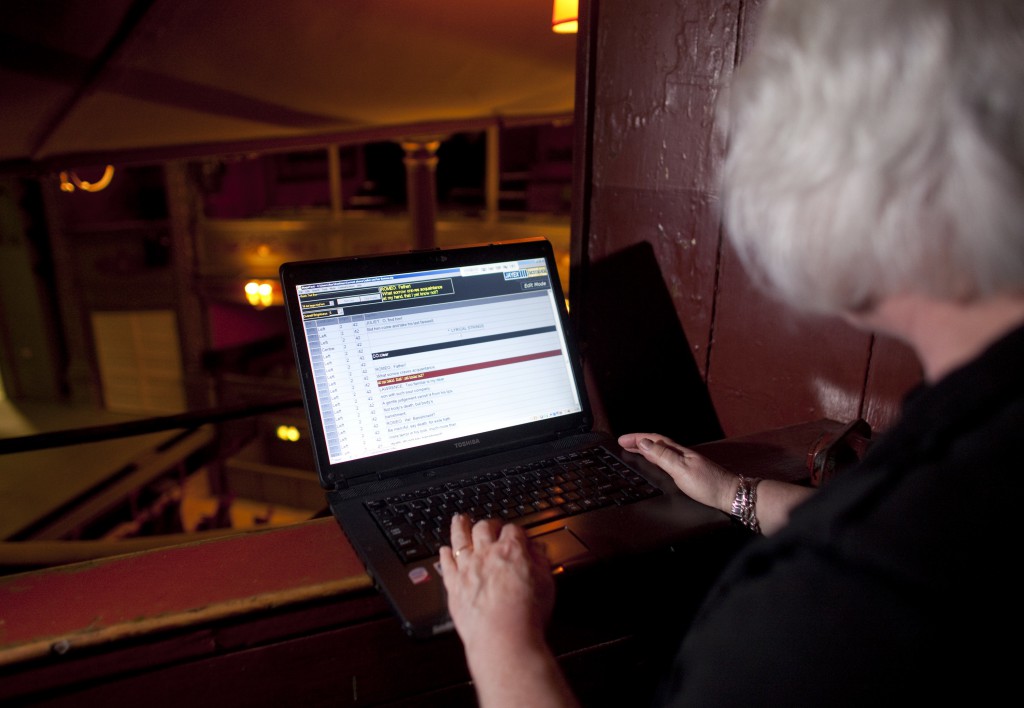
STAGETEXT Captioner at Bristol Old Vic. Photo: Mike Lusmore
Captioner software
The captioning software developed by STAGETEXT allows us to include italics, foreign accents – in several languages – and musical notes, and we can alter the brightness of the captions and the speed at which they reach the captioning screens.
Symbols indicate sound effects: a crotchet for music, with the name of the piece or an indication of style and mood, often discussed in advance with the stage manager or sound designer. There is also a ‘mimic box’ in the software (like a small caption unit) so we can rehearse our timings without being hooked up to a caption unit.
Occasionally, a show may include some ad libs – usually pantomimes. The software allows captioners to type short pieces of text live, if there is sufficient time. In a recent production, one actor had spoken to the captioner before the show and warned her that he might include her in the performance and test her skills by shouting out something. On that occasion, it was the word ‘antidisestablishmentarianism’ which she typed as fast as she could, resulting in a huge round of applause from the audience. However, it’s situations like these that captioners would prefer to avoid at all costs, because the text appears late and spelling mistakes can occur. It’s also very stressful typing live in front of an audience of over 2,000 people!

Actors’ warm up before captioned play, Donmar Warehouse. Photo: Matt Humphrey
Preparation
Captioners often see the show first in the audience, if time allows, to get a feel for the production. We need an up-to-date DVD of the production, ideally shot after press night, so that we can rehearse at home and check the actors’ delivery and timing, and we carry out a number of ‘script checks’ at theatre. This is when we sit in a technical box where we can hear and see the action on stage via ‘show relay’ or ‘cans’ (headphones), or in one of the audience boxes in the auditorium.
When the script checks have been completed, we’re ready to roll. On the day of the captioned performance we get to the theatre well before the show, usually when the caption units are being rigged, then we test the equipment to make sure everything is working properly. We cue the captions from a laptop which is linked to the caption unit (or units) via a small converter box. At this point, we also check with the production and front of house teams whether there will be any special announcements before or after the show, any actor changes (our biggest nightmare) or any last-minute changes to the script. Sometimes we demonstrate the scrolling captions to the actors during their warm-up.
As the audience arrives, a welcome message is displayed on the caption unit and one explaining the purpose of the captions. This is so that anyone using the captions can make sure they can see them clearly from their seat, and to explain to the hearing audience who they are for.
When the show starts we send each line to the caption unit, taking care to skip any missed ones so they don’t appear. (Yes, this can happen!) The whole process demands a combination of skills, not least the ability to maintain concentration for a long period of time.
The preparation is hard work, but knowing that you’re working towards a live performance and giving access to deaf, deafened and hard of hearing audience members who would otherwise be unable to enjoy the show makes everything worthwhile.
For more information on the work of a captioner, have a look at this film on the STAGETEXT Youtube channel.
[youtube=www.youtube.com/watch?v=ZIfNzSt5rSw]
STAGETEXT has also produced a new film, Getting More Theatre For Your Bucks, featuring deaf, deafened and hard of hearing people talking about their experiences of captioned theatre:
[youtube=www.youtu.be/nMzm1yvtwKU]
A list of forthcoming captioned performances can be found at Stagetext and there’s a free mailing list you can join by contacting enquiries@stagetext.org
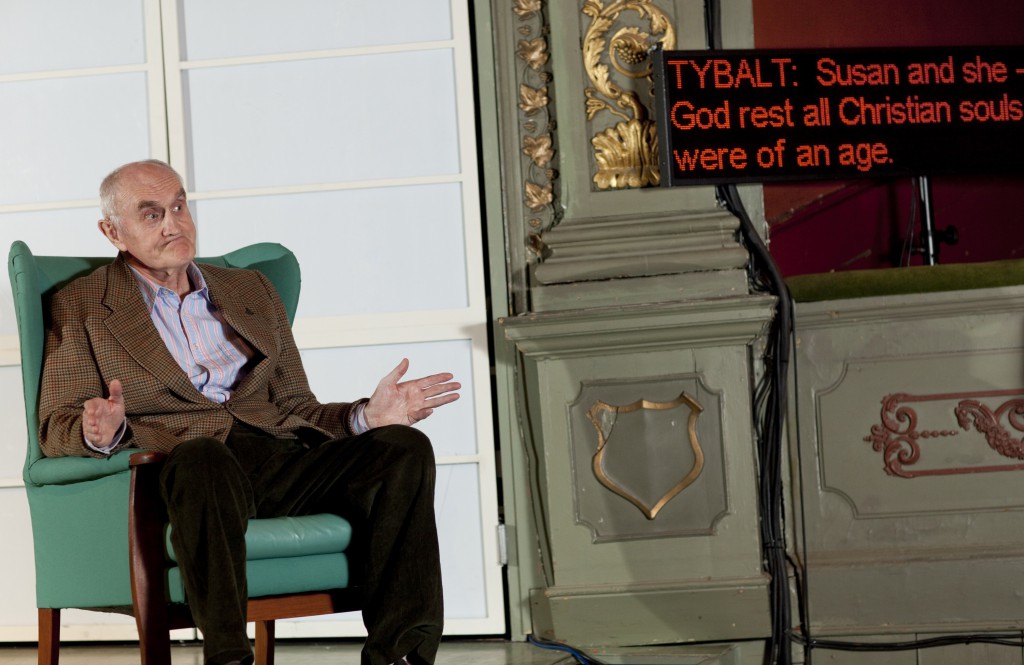
Deafened actor Tim Barlow at captioned performance, Bristol Old Vic. Photo: Mike Lusmore
Seating for caption users
Responsibility for the seating for deaf, deafened and hard of hearing audiences varies depending on whether STAGETEXT is providing the captioning or whether the venue has its own in-house service. (This is indicated in the What’s On listings on our website.) Whenever a new theatre decides to offer its first captioned show, STAGETEXT will carry out a site visit to determine the best place for the caption unit (or units) so that caption users can watch the show in comfort, ideally with minimal or no head movement. Each theatre and each production are different so it’s important that people use the booking details on the STAGETEXT website rather than going online or through a ticket agency, and they should make sure they ask for seats suitable for viewing the captions.
If I’m in the wrong seat, what should I do?
As you enter the auditorium there will be a welcome message on the caption unit. If STAGETEXT is captioning the show, it may say something like: ‘This performance of The Show That Never Was will be captioned by STAGETEXT’. You should be able to see the captions from your seat. If you can’t, then speak to one of the theatre ushers or Front of House Manager who should be able to help you. Obviously if it’s a very popular show, it may be more difficult to move, but the Front of House team will do all they can to help.

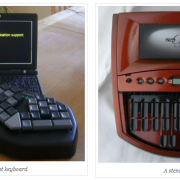



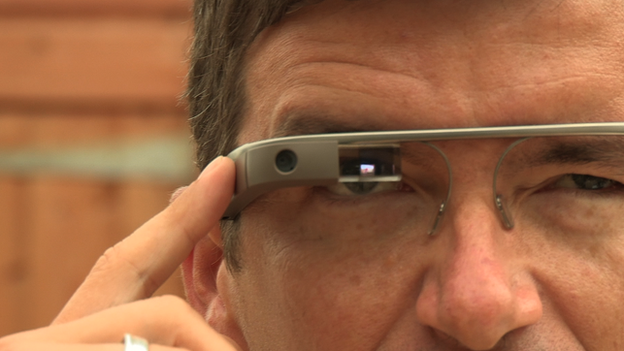
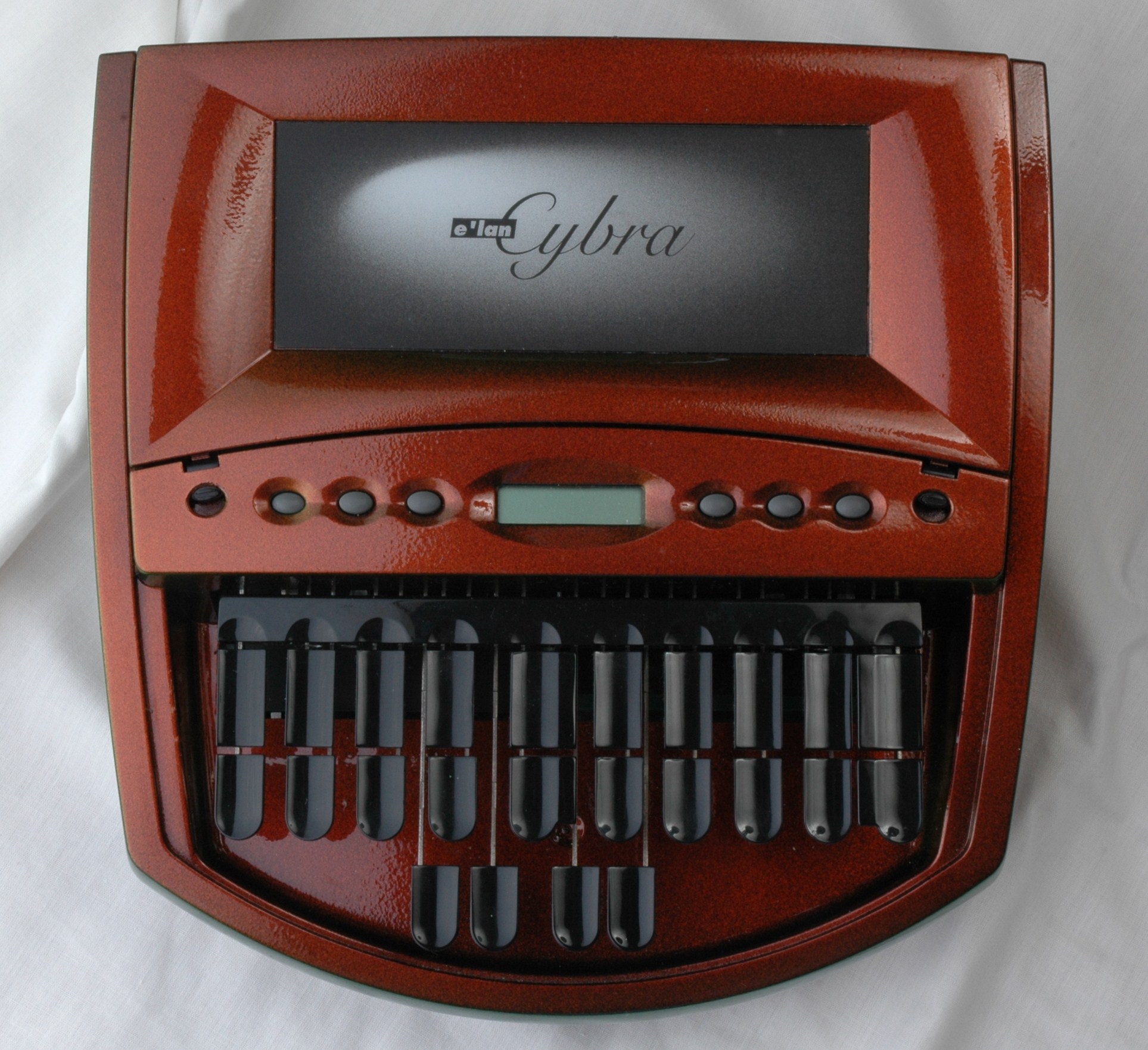
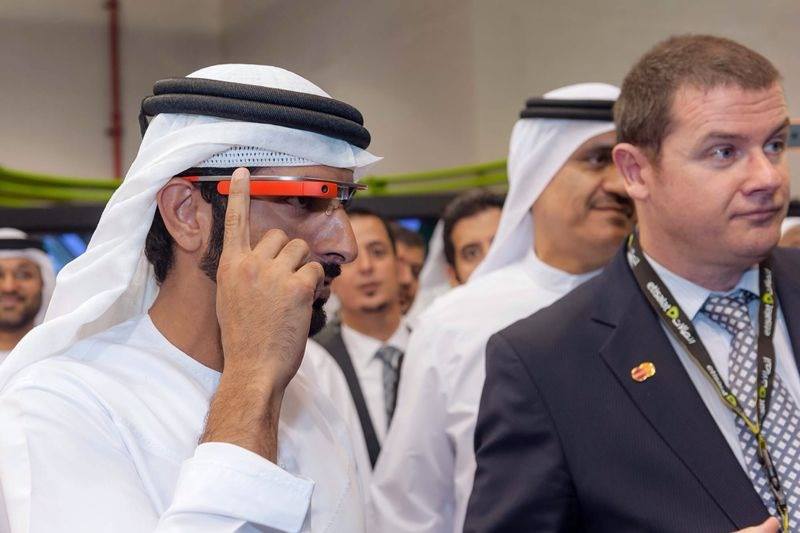
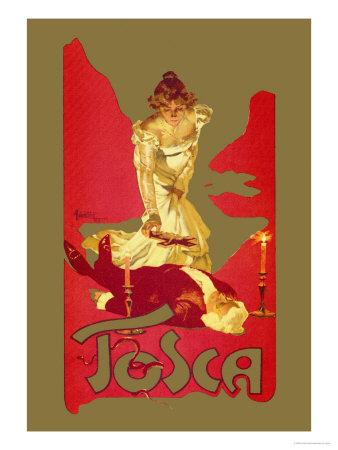


Leave a Reply
Want to join the discussion?Feel free to contribute!